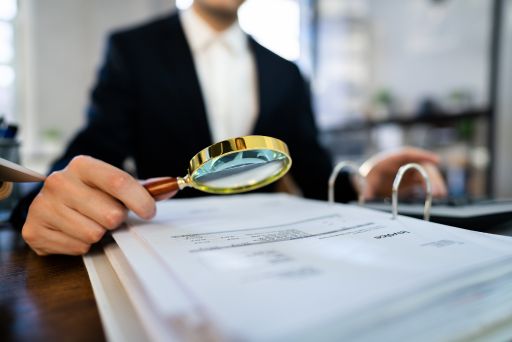Form 720, the Quarterly Federal Excise Tax Return, is a crucial document for businesses subject to federal excise taxes. Understanding where to file Form 720 and the associated requirements can help ensure compliance with IRS regulations. This comprehensive guide will walk you through everything you need to know about filing Form 720, from determining your excise tax liability to submitting the form.

Understanding Form 720
Form 720 is used to report and pay federal excise taxes. These taxes apply to a variety of goods and services, including air transportation, diesel fuel, aviation gasoline, and indoor tanning services. Businesses that deal with these goods and services must file Form 720 on a quarterly basis.
Who Needs to File Form 720?
IRS Form 720 is a specialized tax form required from certain entities dealing with goods or services subject to federal excise taxes. Understanding which businesses are mandated to file this form is crucial for compliance. Let’s delve into the details of the eligibility criteria.
1. Businesses
Any entity, whether a sole proprietorship, partnership, corporation, or limited liability company, dealing in goods or services subject to federal excise taxes must file Form 720. This includes:
- Sole proprietorships: Individual business owners who deal with taxable goods or services.
- Partnerships: Businesses with multiple owners that engage in activities subject to excise taxes.
- Corporations: Incorporated entities that manufacture, produce, or sell goods/services subject to excise taxes.
- Limited Liability Companies (LLCs): Businesses structured as LLCs that fall under excise tax obligations.
Examples
- Luxury goods sellers: Businesses involved in the sale of high-end items, such as expensive jewelry or luxury automobiles.
- Specific equipment dealers: Sellers of sport fishing equipment or archery gear, which are subject to excise taxes.
2. Manufacturers and Producers
Entities that manufacture or produce certain goods are directly obligated to file Form 720. This includes:
- Alcohol manufacturers: Breweries, wineries, and distilleries producing beer, wine, spirits, and other alcoholic beverages.
- Tobacco producers: Manufacturers of cigarettes, cigars, and smokeless tobacco products.
- Fuel producers: Companies blending biofuels or producing other types of fuel.
Examples
- Breweries: Businesses brewing beer, including craft breweries.
- Cigarette manufacturers: Companies producing cigarettes and cigars, including large-scale and boutique producers.
- Biofuel blenders: Entities that blend ethanol or biodiesel with traditional fuels.
3. Importers
Importers bringing goods into the U.S. that are subject to excise taxes have specific responsibilities. They must understand the classifications and ensure compliance with excise tax regulations.
Examples
- Truck importers: Businesses importing certain types of trucks or trailers, where the tax classification can vary based on weight and usage.
- Luxury car importers: Companies importing high-end automobiles that attract luxury taxes.
4. Retailers and Sellers
Retailers and sellers of goods or services attracting excise taxes at the retail level have unique obligations. They must be aware of the specific excise taxes applicable to their products and ensure proper filing.
Examples
- Indoor tanning services: Providers of indoor tanning services, which are subject to specific excise taxes.
- Sellers of ozone-depleting chemicals: Retailers dealing with chemicals that have been identified as harmful to the ozone layer.
- Heavy truck and trailer retailers: Sellers of heavy trucks and trailers, where the excise tax is based on the vehicle’s gross weight.
When to File Form 720
Form 720 must be filed on a quarterly basis. The deadlines are as follows:
- First quarter: April 30
- Second quarter: July 31
- Third quarter: October 31
- Fourth quarter: January 31
If the due date falls on a legal holiday or weekend, the deadline is extended to the next business day.

Filing Form 720: Step-by-Step Guide
1. Gather Necessary Information
Before you begin filing Form 720, gather the following information:
- Employer Identification Number (EIN)
- Details of the excise taxes you are reporting
- Tax liability for each type of tax
- Payment details if you are paying electronically or by check/money order
2. Completing Form 720
Form 720 is divided into several parts:
- Part I: Environmental taxes, communication taxes, and air transportation taxes
- Part II: Fuel taxes, including diesel fuel and aviation gasoline
- Part III: Taxes on specified health insurance policies and other services subject to excise taxes
Part I: Environmental Taxes
Environmental taxes include taxes on ozone-depleting chemicals, imported petroleum products, and other specified items. These taxes are listed in Part I of Form 720.
Part II: Fuel Taxes
Part II covers taxes on taxable fuel, including diesel fuel, aviation gasoline, and alternative fuels. It’s essential to accurately calculate your excise tax liability for each type of fuel.
Part III: Specified Health Insurance Policies
Part III involves reporting taxes on specified health insurance policies. This includes calculating the average number of lives covered and the applicable tax rate.
Special Considerations (Pro Tips) for Filing Form 720
When dealing with Form 720, there are several nuances and considerations to keep in mind to ensure smooth filing and compliance. Here are some pro tips to help you navigate the process effectively:
1. Electronic Filing
The IRS mandates electronic filing for entities with an excise tax liability that exceeds $2,500 for a given quarter. This requirement ensures a faster, more secure, and efficient process, benefiting both the taxpayer and the IRS.
Electronic filing offers several advantages. It speeds up the submission process, allowing forms to be processed faster than traditional paper submissions. E-filing also enhances security by reducing the risk of documents being lost or misplaced. Additionally, the efficiency of automated calculations and validations helps minimize errors, ensuring a smoother and more accurate filing experience.
To file electronically, you can use the IRS e-file program. Many tax software providers and authorized tax professionals can also facilitate the e-filing process.
2. Tax Payment
Determining Your Excise Tax Liability
Once you’ve determined your excise tax liability for the quarter, it’s essential to make timely payments to avoid penalties and interest.
Payment Methods
Electronic Federal Tax Payment System (EFTPS)
Using the Electronic Federal Tax Payment System (EFTPS) is highly recommended for making tax payments. This system provides a secure and efficient method for tax payments.
- Enrollment: To use EFTPS, you need to enroll on the IRS website or through your financial institution.
- Payment Scheduling: You can schedule payments in advance, ensuring timely compliance.
Mailed Payments
Alternatively, payments can be mailed directly to the IRS. If you choose this method:
- Make Checks Payable to “United States Treasury”: Ensure that your check or money order is correctly addressed.
- Include Payment Voucher: Attach the payment voucher from Form 720 to your payment.
Encouraged Electronic Payments
Electronic payments are encouraged for their efficiency and reliability. They provide a clear audit trail and reduce the risk of errors associated with manual processing.
3. Record Keeping
Importance of Proper Documentation
Proper documentation is the backbone of any tax process. It’s imperative to maintain detailed and accurate records of all transactions subject to excise taxes. Good recordkeeping practices include:
- Detailed Invoices: Keep all invoices and receipts for goods and services subject to excise taxes.
- Transaction Logs: Maintain logs of all transactions, including dates, amounts, and tax rates applied.
- Payment Records: Document all tax payments made, whether electronically or by mail.
Benefits of Good Record Keeping
- Preparation of Form 720: Accurate records make it easier to prepare Form 720 and ensure all information is correct.
- IRS Audits: In the event of an IRS audit, detailed records provide evidence of compliance and can help resolve discrepancies quickly.
- Discrepancies: Good documentation can help identify and rectify any discrepancies in tax calculations or payments.
Tools for Recordkeeping
Consider using accounting software or digital tools to streamline your recordkeeping process. These tools can automate many aspects of documentation and ensure accuracy.
4. Additional Tips
Stay Informed on Tax Changes
Tax laws and regulations can change frequently. Stay informed about any updates or changes to federal excise taxes that may affect your filing requirements.
Consult a Tax Professional
Given the complexity of Form 720 and federal excise taxes, consulting a tax professional can provide valuable guidance. A tax pro such as Vyde can help you understand your obligations, ensure accurate filings, and offer advice on optimizing your tax strategy.
Regular Review and Compliance Checks
Regularly review your excise tax processes and compliance checks. This proactive approach helps identify potential issues early and ensures that your business remains in good standing with the IRS.

Special Considerations for Form 720
Quarterly Federal Excise Tax Return
Form 720 is a quarterly federal excise tax return. This means you need to report and pay your taxes every quarter. Keep track of quarterly deadlines to avoid penalties.
Filing for Specific Services
Certain services, like indoor tanning services and air transportation, have specific reporting requirements. Ensure you understand the federal regulations related to your business.
Foreign Insurers
If you are a foreign insurer providing services in the U.S., you must also file Form 720. The same deadlines and filing requirements apply.
Sole Proprietorships
Sole proprietorships subject to excise taxes must file Form 720. Make sure to include all relevant information and payments.
Common Mistakes to Avoid
Filing Form 720 can be complex, and it’s easy to make mistakes. Here are some common errors to avoid:
- Incorrect tax liability calculations: Ensure you accurately calculate your excise tax liability for each type of tax.
- Missing deadlines: Remember the quarterly deadlines to avoid penalties.
- Incorrect or incomplete information: Double-check your EIN, tax amounts, and other details before submitting the form.
- Not including payment: If you owe taxes, include your payment with Form 720.

Conclusion
Filing Form 720 is an essential task for businesses subject to federal excise taxes. By understanding the requirements, gathering necessary information, and accurately completing the form, you can ensure compliance with IRS regulations. Whether you choose to file electronically or by mail, make sure to meet the quarterly deadlines and include any required payments. Working with a tax professional can also help simplify the process and ensure accuracy. With the right preparation and resources, you can confidently file Form 720 and manage your excise tax liability effectively.
FAQs: Where to File Form 720
1. Who needs to file Form 720?
Answer: Form 720, the Quarterly Federal Excise Tax Return, is required for any entity dealing in goods or services subject to federal excise taxes. This includes sole proprietorships, partnerships, corporations, and limited liability companies (LLCs). Specific examples include businesses involved in selling luxury goods, sport fishing or archery equipment, alcohol, tobacco, fuel, and providers of indoor tanning services. Importers and retailers of goods subject to excise taxes, such as heavy trucks or ozone-depleting chemicals, are also required to file Form 720.
2. What are the deadlines for filing Form 720?
Answer: Form 720 must be filed on a quarterly basis. The filing deadlines are:
- First Quarter: April 30
- Second Quarter: July 31
- Third Quarter: October 31
- Fourth Quarter: January 31
If the due date falls on a legal holiday or weekend, the deadline is extended to the next business day. It is crucial to meet these deadlines to avoid penalties and interest charges.
3. Can I file Form 720 electronically?
Answer: Yes, electronic filing is mandatory for entities with an excise tax liability exceeding $2,500 for a given quarter. The IRS e-file program facilitates the electronic submission of Form 720, ensuring a faster, more secure, and efficient process. Many tax software providers and authorized tax professionals offer e-filing services. Electronic filing is encouraged due to its benefits, including speed, security, and efficiency.
4. How do I determine my excise tax liability for Form 720?
Answer: To determine your excise tax liability for Form 720, you need to gather detailed information about the goods or services subject to federal excise taxes that your business deals with. This includes maintaining accurate records of all taxable transactions, understanding the applicable tax rates, and calculating the total tax due for each type of excise tax. Proper recordkeeping is essential to ensure accurate tax calculations and compliance with IRS regulations.
5. What payment methods are available for paying excise taxes reported on Form 720?
Answer: There are two primary payment methods for paying excise taxes reported on Form 720:
- Electronic Federal Tax Payment System (EFTPS): This is the preferred method, providing a secure and efficient way to make tax payments. You can enroll on the IRS website or through your financial institution and schedule payments in advance.
- Mailed Payments: Alternatively, you can mail your payment directly to the IRS. Ensure your check or money order is payable to “United States Treasury” and include the payment voucher from Form 720.







































